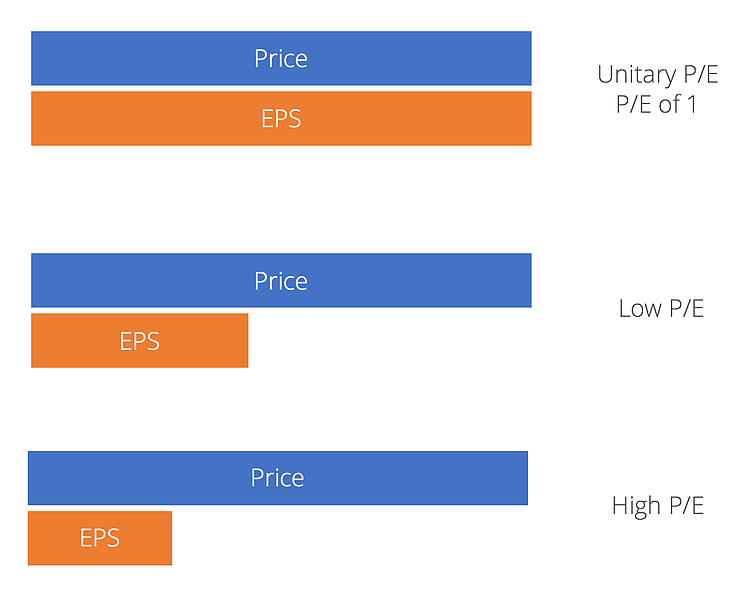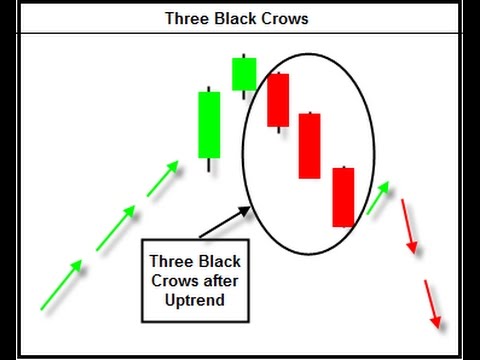
The United States has a highly competitive market with a large number of participants, including exchanges, electronic communications networks or “ECNs,” alternative trading systems or “ATSs,” over-the-counter (“OTC”) market makers, and proprietary trading firms. An exchange brings together the orders of multiple buyers and sellers and is required to provide the best bid and offer prices for each stock that it trades, as well as last-sale information for each trade that takes place on that exchange. This information is collected and made public through consolidated systems that are approved and overseen by the SEC.
Fat-finger errors that cost the City dear – The Times
Fat-finger errors that cost the City dear.
Posted: Sat, 05 Aug 2023 23:01:00 GMT [source]
In the middle of 2017, the price of ethereum on the now-defunct exchange GDAX managed to plummet from $319 to just 10 cents in a matter of seconds. Unlike many securities after a flash crash, ethereum managed to recover all of those losses and more during the same day. The major benefit of using computers to trade is the speed at which they can do it and the fact they can trade without fear of falling foul of human sentiment or emotion.
What is Flash Trading?
Interestingly, these same trading systems are also largely responsible for the subsequent recovery that follows a flash crash. The price falls so low that buyers begin to outstrip sellers and the price recovers. Securities that plunge in price as a result of a flash crash flash trade meaning typically recover the majority of their value as quickly as they lost it, although many fail to immediately recover all the lost value. With the speed of decline and recovery in mind, some consider a flash crash as nothing more than an extreme burst of volatility.
ICICIdirect launches online platform Flash Trade for F&O traders – Business Insider India
ICICIdirect launches online platform Flash Trade for F&O traders.
Posted: Mon, 26 Sep 2022 07:00:00 GMT [source]
Many are concerned, however, that high frequency trading can be harmful, depending on the trading strategies used, both to the quality of the markets and the interests of long-term investors. In addition, the recipients of the flashed order can trade at the same price as the displayed quote without publicly quoting themselves. At the same time, the investor who is publicly quoting may miss out on the opportunity to receive an execution. The recipients of the flashed order also may obtain an informational advantage by seeing and being able to react to orders in the market before others can. As a result, flash orders could lead to a two-tiered market where the public does not have equal access to information about the best available prices for listed securities. Our equity markets have faced serious tests since the onset of the financial crisis, and generally the markets have performed well.
How much does trading cost?
However, speculation that some algorithms are acting on data that is less black and white than the numbers they usually use to operate means these computers are trying to trade on human emotion that they don’t have. And, while not responsible for the initial turmoil, the rapid decline in price triggered large numbers of automated trading to take place as prices broke through pre-determined thresholds. As the majority of trading is done through automated programmes, most high frequency traders end up trading with other high frequency traders, all of which have their own orders and limits in place. This means when those high frequency trading orders were triggered by Sarao’s fraudulent sell orders, it went on to trigger orders from other high frequency traders – causing a downward spiral. The spark of this particular crash came down to one British trader named Navinder Singh Sarao. Dubbed the ‘Hound of Hounslow’ and the ‘Flash Crash Trader’, Sarao was convicted after pleading guilty to charges of spoofing and market manipulation in 2016.

In short, exchanges and ECNS utilize flash trading to maintain or increase market share, something the exchanges are constantly in a vigorous battle over. The Commission recognizes concerns have been raised that high frequency traders have the ability to access markets more quickly through high-speed trading algorithms and co-location arrangements. This ability may allow them to submit or cancel their orders faster than long-term investors, which may result in less favorable trading conditions for these investors.
What causes flash crashes?
The news drove investors to buy the yen, which is considered a safe-haven currency. CME Group, which runs the Nymex exchange the futures trade on, said its markets had ‘worked as designed’ as the event activated its ‘velocity logic’ that paused trading in the market for 10 seconds to allow liquidity to return to the market. At the time, GDAX attributed the flash crash to a multi-million dollar sell order pushing the price lower, again triggering hundreds of other sell orders, enough to nearly wipe the entire value of the cryptocurrency altogether. Once again, no firm cause has been identified but it is largely accepted that the flash crash was caused by a ‘fat-finger’ mistake combined with tight liquidity. The flash crash in US Treasury bonds – known as the ‘Great Treasury Flash Crash’ – occurred in October 2014 and debate over the primary cause is still debated today.

Flash orders also offer potential benefits to certain types of market participants. For example, for those seeking liquidity, the flash mechanism may attract additional liquidity from market participants who are not otherwise willing to display their trading interest publicly, and could help lower the transaction costs of those responding to flash orders. Flash orders may be executed through the flash process for lower fees than those charged by many markets for accessing displayed quotations.
Have “flashes” spawned front-running?
It’s impossible to outthink these programs on a day-to-day basis, but you can tell where the market is headed by following the business cycle. Many of these investors were banks, so the London Inter-Bank Offered Rate (LIBOR) rose. It could have been linked to the closure of the Wall Street Journal’s homepage, or the grounding of United Airlines flights. On June 22, 2017, the price of ethereum crashed as low as 10 cents from around $319 in a matter of seconds on the Global Digital Asset Exchange (GDAX).
Treasury, with estimates of 50% in cash securities and 60% to 70% in futures. An increase in electronic trading has reduced the bank’s involvement and over-the-phone orders. The combination of automation and high frequency trading can speed up any reaction in the market. A typical stock market crash signals a loss of confidence in the economy. Investors usually realize a flash crash is caused by a technical glitch, not a loss of confidence.
- The Commission has stated, both in adopting Regulation NMS and in proposing to ban flash orders, that the interests of long-term investors should be upheld as against those of professional short-term traders, when those interests are in conflict.
- It has not been prepared in accordance with legal requirements designed to promote the independence of investment research and as such is considered to be a marketing communication.
- This creates a snowball effect and at the speed with which computers make trades, a sudden plunge in the market occurs.
- Michael Lewis, author of Flash Boys, said that the presence of these high frequency trading programs means that an individual investor cannot get ahead.
- Flash trading, also known as a flash order, is a controversial practice where traders with access to sophisticated technology can view orders before the market.
The DJIA suffered yet another flash crash in August 2015 when the Dow plunged around 1100 points within the first five minutes of the trading day. This once again triggered suspensions as stock prices became too volatile, which in turn made it difficult for exchanges to correctly price indices that those stocks were included in. The S&P 500 plunged 5% within minutes of the open but managed to largely recover its losses by the middle of the day.
Ethereum Flash Crash
To benefit from flash quotes and increase spread gains, this trading technique included cutting-edge technologies. Large market makers, including names like Goldman Sachs, raised the spreads on trades by 1-2 cents each thanks to the subscription of flash trading. As you know, Chairman Schapiro has expressed concern about transparency in dark pools generally. I mentioned earlier that all trades, even those in dark pools, have to be reported to the consolidated tape in real time.
- The price falls so low that buyers begin to outstrip sellers and the price recovers.
- The information in this site does not contain (and should not be construed as containing) investment advice or an investment recommendation, or an offer of or solicitation for transaction in any financial instrument.
- In particular, the proposal would exclude IOIs for $200,000 or more that are communicated only to those who are reasonably believed to represent current contra-side trading interest of equally large size.
- These trading programs make any stock movement more intense, adding risk.
The market depth was unexpectedly low, even though the volume in the 10-year note was up. Flash trading is a controversial practice where preferred clients, with access to sophisticated technology, can view orders before the entire market. It’s the new bogeyman, but the odds of it coming back are not great, and the odds that it would destroy high frequency trading is not great either. In 2004, dozens of NYSE specialists were investigated and several firms were prosecuted for trading ahead of customer orders. That embarrassing investigation came after a late 1990s case in which floor brokers pleaded guilty to front-running.
In just 12 minutes, the yield on the ten-year US Treasury bond managed to lose and then recover 1.6% and was the largest decline in a single day since 2009. Below is a series of examples that demonstrate how flash crashes can impact different securities and shows how they are often caused by several drivers. “Retail investors have not been harmed by flashes or high-frequency trading — they’ve benefited tremendously,” he said.
Despite record volumes and volatility, particularly in the fall of 2008, the markets for U.S.-listed securities have remained open and continued to operate in a fair and orderly manner and to perform their vital price discovery function. Buyers and sellers could see current prices and expect to execute their trades promptly at the prices they saw on their screens. Dark liquidity –meaning orders and latent demand that are not publicly displayed – has been present in some form within the equity markets for many years.
These tools may just alert you to some potential opportunities you might not notice otherwise. The risks of loss from investing in CFDs can be substantial and the value of your investments may fluctuate. CFDs are complex instruments and come with a high risk of losing money rapidly due to leverage. You should consider whether you understand how this product works, and whether you can afford to take the high risk of losing your money.
